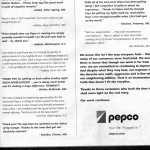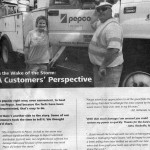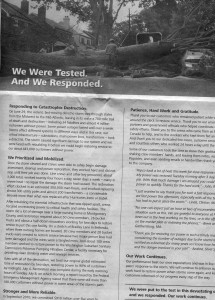It’s not the medium, it’s the message
Here I go again. Pepco can’t seem to stop providing material. On Friday, I received a letter from Thomas H. Graham, Pepco’s regional president. It was addressed to “Dear Valued Pepco Customer.”
This letter, dated August 3 (but received two weeks later), is more of what we have already seen in Pepco’s ads and public statements. The derecho was very bad. Pepco had a lot of work to do. Pepco is committed to improving reliability.
Same message, different medium.
My favorite line is this:
Yet, even with all the destruction, Pepco restored power to 90% of customers by midnight on July 4, more than 48 hours before our original estimate.
Let’s rewrite: Most Pepco customers were without power for five days. Pepco did not get power to all its customers until some eight days after the storm.
Without the spin, it doesn’t sound so good, does it?
Then we have this gem:
Today, we are stronger and more reliable–but no amount of strengthening to our system could have withstood a storm of this magnitude.
In other words, Pepco wants customers to be aware that Pepco is not equipped to deal with storms “of this magnitude.”
And the letter finishes off with the same message that we have seen over and over:
Again, we sincerely thank you for your patience. I would also like to thank customers who took time to show their gratitude–shaking crew members’ hands, leaving them notes, water and Popsicles…We will continue to enhance our reliability….
Note to Mr. Graham: anybody who was able to give crew members Popsicles had to have some refrigeration. Just saying.
Pepco does not get that it does not matter what medium you use, the message is still not resonating.
Personally, I don’t feel any better about Pepco after reading this letter–in fact, I am angry that the company would waste paper, postage and money putting together another self-congratulatory and inaccurate piece of propaganda. What do you think? Is direct mail to customers the way to get across this message?
About Deborah Brody
Deborah Brody writes and edits anything related to marketing communications. Most blog posts are written under the influence of caffeine.








